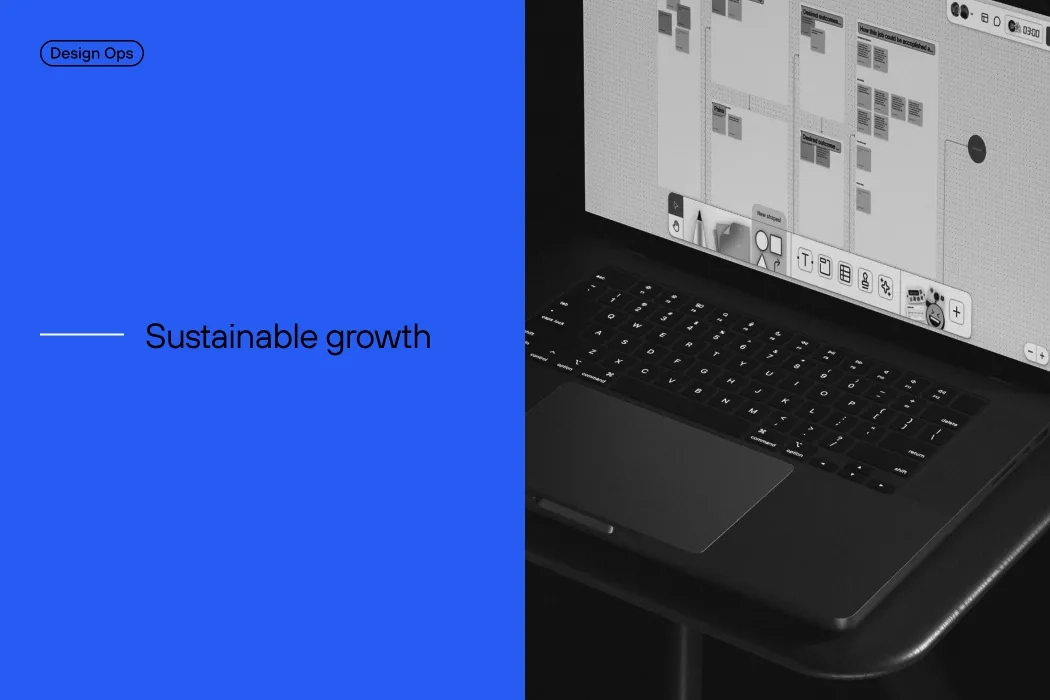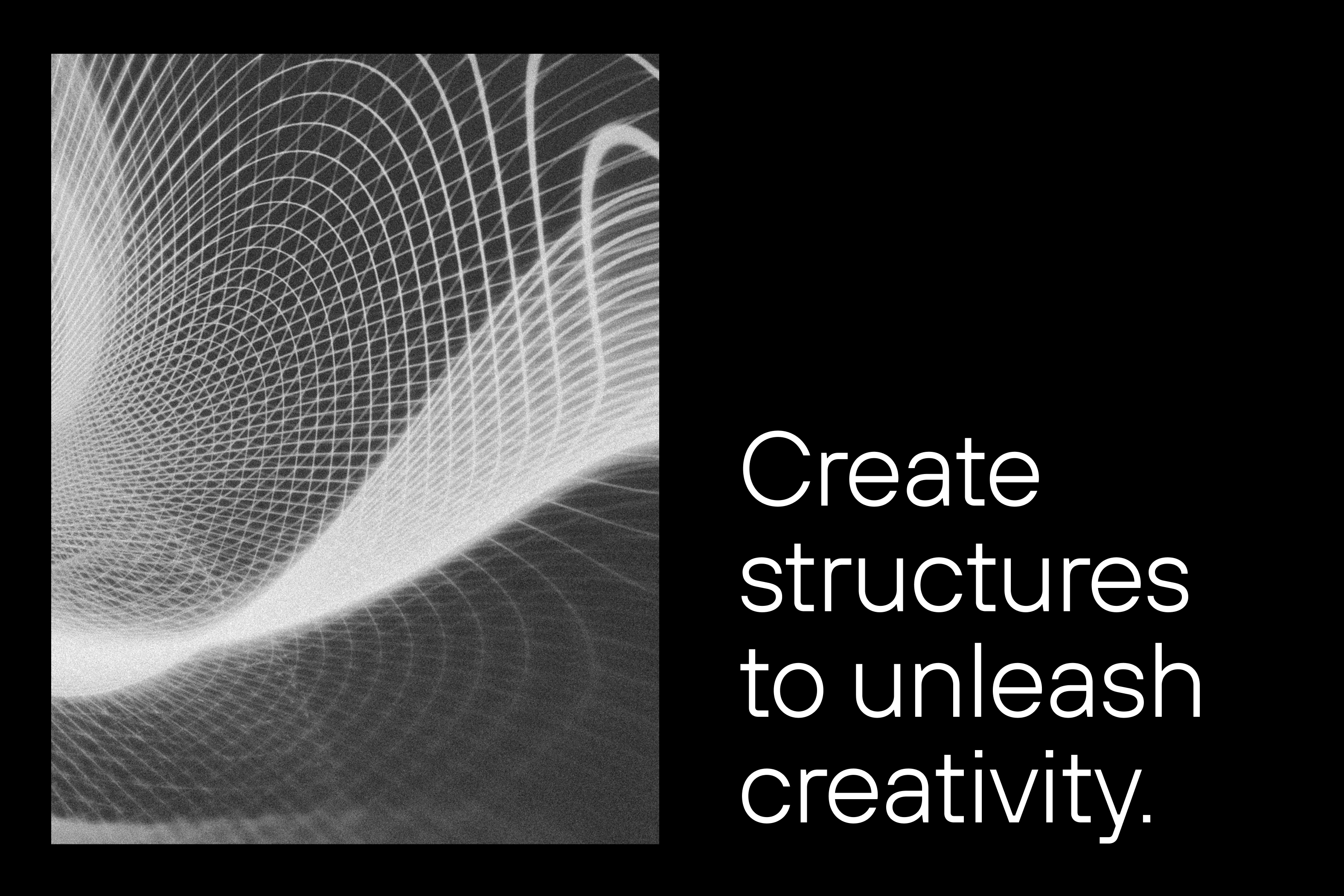
Design Ops has become one of those buzzwords we keep hearing, but when you get down to it, what does it mean in practice? And more importantly, how can it help your company scale Design Ops efforts without burning out teams or losing quality along the way?
I’ve had the chance to experience this firsthand, working in organizations where Design Ops was essential as design was growing fast, but the processes, tools, and communication weren’t keeping up. Today, I want to share what Design Ops is (beyond its definitions), how it supports scaling Design Ops operations, and some practical tips and lessons learned that you can start applying in your own company.
What is Design Ops?
At its core, Design Ops (Design Operations) is about creating the right conditions for designers to do their best work. That means orchestrating people, processes, and tools to reduce friction, increase collaboration, and ensure Design Ops can scale along with business goals.
Think of Design Ops as the backstage crew of a theater. The designers are on stage performing, but without the team making sure the set is built, the lighting works, and everyone knows their cues, the show would fall apart. Design Ops makes sure the design team has clarity, focus, and the environment they need to shine.
Why Companies Need Design Ops to Scale
1. Growing Teams Need Structure
As teams grow, what used to work informally (like quick Slack messages and ad-hoc meetings) stops working. Design Ops brings structure through playbooks, onboarding processes, rituals (like design critiques), and clear roles and responsibilities.
I remember when we were hired to help an organization that had just doubled its design team in a year. Suddenly, people didn’t know who was working on what, or even who to ask for certain things. A few simple Design Ops actions, setting up a team directory, documenting design workflows, and organizing regular team syncs, brought immediate relief and clarity.
2. Scaling Requires Consistency
When multiple designers work on different products, inconsistency creeps in quickly. Design Ops helps scale consistency through design systems, shared libraries, and clear governance.
In one project, we noticed that every designer used slightly different typography scales and spacing rules. It seems small, but those details add up, confuse developers, and dilute brand identity. The creation of a design system with clear typography guidelines, spacing tokens, and an adoption plan saved us countless hours and headaches.
3. Communication and Visibility Are Key
Design teams often do amazing work that no one knows about. Design Ops helps make design efforts visible across the organization, ensuring alignment with product and business goals.
For instance, by sharing monthly design updates and hosting demo sessions, other teams will start to see design as a strategic partner, not just a service provider.
Read also: Personalized Experience to Boost Engagement and Foster Loyalty
Insights from Industry Experts
As Dave Malouf, one of the founding voices of Design Ops, says: “DesignOps is about orchestrating the conditions for design to thrive, at scale, in harmony with other business functions.”
According to the Nielsen Norman Group (NNG), organizations with mature Design Ops see a 228% higher return on investment compared to those with low design maturity. Their research also highlights that teams with dedicated Design Ops functions experience faster onboarding times, more consistent design outputs, and stronger cross-functional collaboration.
InVision’s 2020 Design Maturity Report also noted that 81% of companies that invest in Design Ops reported better alignment between design, product, and engineering teams.

How to Structure Design Ops in Your Organization
Every company is different, but here are some building blocks I’ve found helpful:
1. Start with People
- Map the team’s skills and aspirations. Know who excels in what and where they want to grow.
- Create rituals for connection and learning, like weekly design critiques or knowledge-sharing sessions.
- Build bridges with other teams. Schedule regular touchpoints with product, development, and marketing.
2. Organize Processes
- Onboarding: New designers should never feel lost. Create an onboarding checklist that includes links to essential tools, documentation, and key contacts.
- Design documentation: Create templates and guides to ensure design decisions are recorded and easy to access.
- Feedback loops: Don’t just wait for annual reviews — set up continuous feedback mechanisms.
3. Invest in Tools and Infrastructure
- Design systems: Start small, but start! Even a simple shared library of components helps.
- Collaboration tools: Invest in tools that make cross-functional work easier (Figma, Miro, Notion, etc.).
- Metrics tracking: How do you measure success? Start tracking things like design system adoption, usability test frequency, or Design Ops satisfaction surveys.
I want to know more about Design Operations
Scaling Design Ops: Lessons Learned
1. Don’t Overcomplicate
There’s a temptation to build massive frameworks and process documents that no one uses. Start with what people need and evolve.
We might spend weeks crafting a process flowchart that ends up sitting in a Google Drive, never opened. What’d work better? A simple checklist integrated into our design tool that everyone could follow without leaving their workflow.
2. Co-Create, Don’t Dictate
Design Ops shouldn’t be a top-down effort. Involve designers and other stakeholders in shaping the processes. They’ll be more likely to adopt what they helped build.
3. Share Wins
Celebrate when things work! Whether it’s the launch of a design system update, a successful design sprint, or a smooth onboarding experience, share those stories.
Learn more: Design on Demand: Agility and Strategy That Deliver Continuous Visual Value
What Success Looks Like
When Design Ops is working well, here’s what you start to see:
- Designers are spending more time designing, less time chasing information.
- Consistent outputs across products and teams.
- Stronger collaboration between design, product, and engineering.
- Clear visibility of design impact at a leadership level.
- A happier, more engaged design team.
Recommended Reading
If you’d like to dive deeper into this topic, I recommend these excellent resources:
- Org Design for Design Orgs by Peter Merholz and Kristin Skinner — a must-read for anyone shaping design teams and operations.
- DesignOps Handbook by Dave Malouf — a practical guide with real-life examples.
- The Design of Everyday Things by Don Norman — a timeless resource on design thinking and usability.
- Lean UX by Jeff Gothelf — for teams looking to integrate lean methods into design practice.
References
- Nielsen Norman Group – DesignOps 101
- InVision – Design Maturity Model Report 2020
- Dave Malouf – DesignOps Community Resources
Final Thoughts
Design Ops isn’t about bureaucracy. It’s about enabling creativity at scale and giving design teams the clarity and support they need to do their best work.
If you’re in an organization where Design Ops is growing, or you’re starting to feel the friction of scaling, start small. Organize what’s messy. Build simple rituals. Create visibility. And don’t forget to celebrate progress along the way.
And hey, if you’re already working on Design Ops, I’d love to hear your stories. What’s worked for you? What lessons did you learn the hard way? Let’s keep the conversation going!
